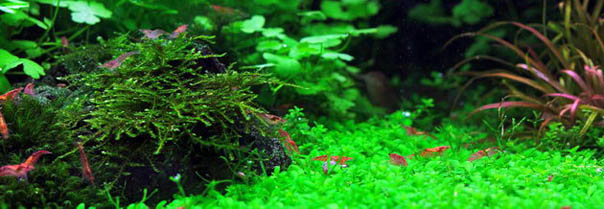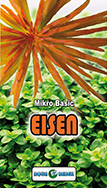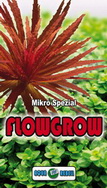Copper (Cu)
In aquaristics, copper is widely known as a strong poison. However, plants need trace amounts of this heavy metal as micronutrient. Copper is absorbed as free Cu2+ cation or if it is bound by chelators. In the plant cell, it is usually only present if bound to proteins, free copper ions would lead to harm due to oxidative stress and the denaturation of proteins.

Copper is a part of a number of enzymes in redox systems, e.g. it is contained in phenoloxidases, which play a part in the defense against microorganisms by catalysing the transformation of phenoles to brown coloured quinones (which is e.g. visible when apple or potato cuttings turn brown). 50% of the copper in the chloroplasts is bound to plastocyanin, which is needed in the process of photosynthesis (the transportation of electrons between photo system II and photo system I durin the light reaction). Forming part of a superoxide dismutase containing copper and zinc, copper obviously also plays an important role in the protection against free oxygen radicals. Ascorbic acid oxidase contains copper, too. It catalyses the oxydation of ascorbic acid (vitamin C) to dehydroascorbic acid. The copper-based enzyme diamin oxidase is important for the synthesis of lignine and thus for the formation of wood in terrestrial plants.
The copper contained in older leaves is immobile and cannot be transported to the areas where the plant grows. Thus, copper deficiencies first show on the youngest leaves. Terrestrial plants get, amongst others, heavy chloroses and stunted leaves. Copper is an iron and manganese antagonist in nutrient absorption, thus high copper concentrations in the ground may lead to a deficit in these nutrients in terrestrial plants.
The following Aqua Rebell fertilizers add copper

